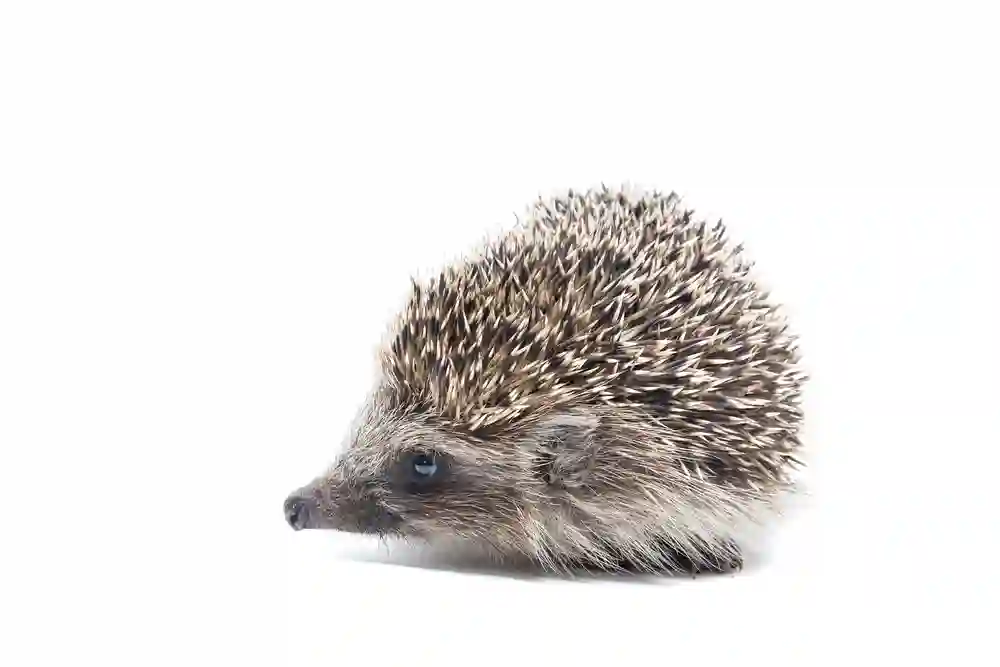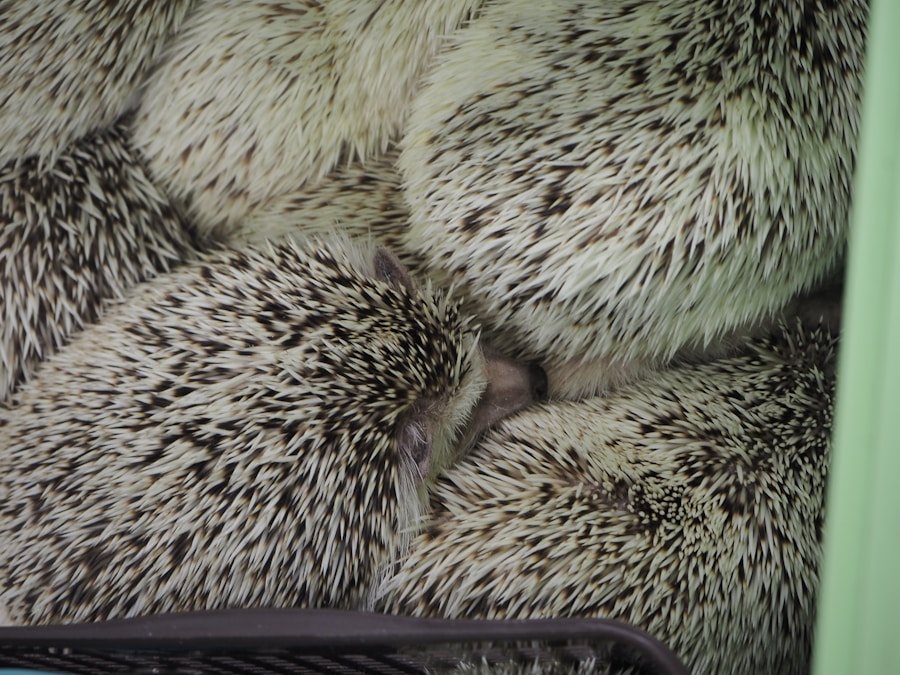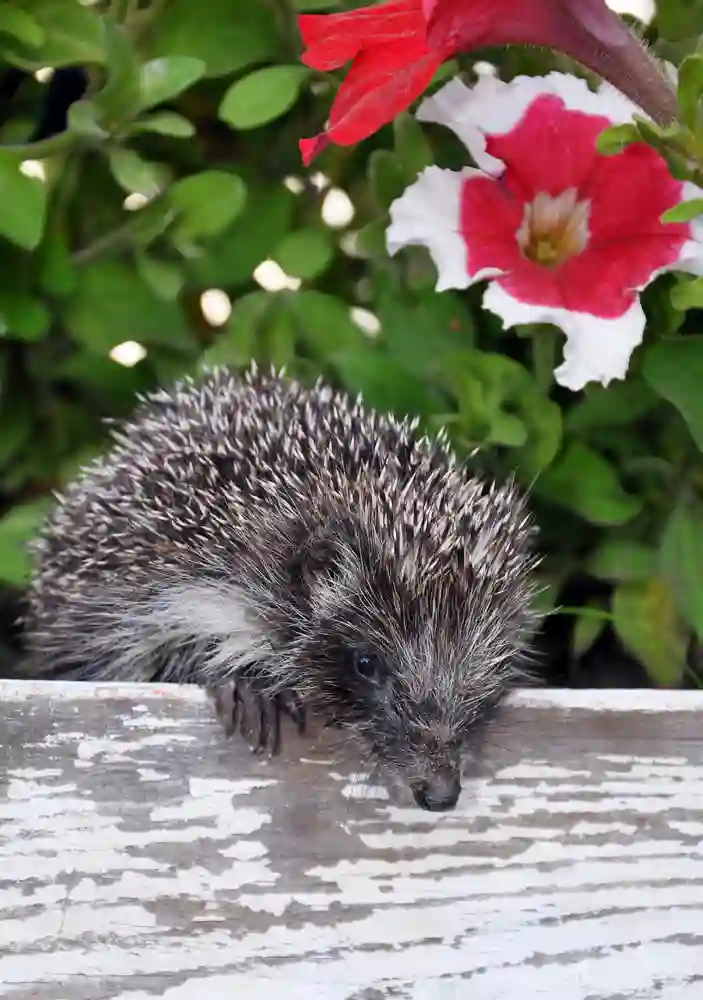Table of Contents
Dark grey hedgehogs, a captivating breed of the common hedgehog, have garnered attention for their unique coloration and charming personalities. These small mammals, often found in various habitats across Europe and parts of Asia, are not only adored as pets but also play a significant role in their ecosystems. Their distinctive dark grey quills set them apart from other hedgehog varieties, making them a favorite among enthusiasts and casual observers alike.
As we delve into the world of dark grey hedgehogs, we will explore their physical characteristics, habitat, diet, reproduction, behavior, conservation status, and their interactions with humans. Understanding dark grey hedgehogs requires an appreciation of their history and the ecological niches they occupy. These creatures have adapted to various environments, showcasing resilience and adaptability.
As we examine their traits and needs, we will also highlight the importance of conservation efforts to ensure that these delightful animals continue to thrive in the wild and as beloved companions. Sure, here is the sentence with the link:
I love to get pet advice from experts on Pawwise.
Key Takeaways
- Dark Grey Hedgehogs are a unique species known for their dark grey fur and spiky appearance.
- They are small, nocturnal mammals with a pointed snout, short legs, and a distinct coat of spines.
- Dark Grey Hedgehogs are found in a variety of habitats, including forests, grasslands, and urban areas, and they primarily feed on insects, small vertebrates, and plants.
- These hedgehogs reproduce once a year, with females giving birth to litters of 1-7 young, and they have a lifespan of 3-7 years in the wild.
- Dark Grey Hedgehogs are solitary animals, but they may interact with others during mating or when sharing a common food source.
Physical Characteristics of Dark Grey Hedgehogs
Dark grey hedgehogs are easily recognizable due to their striking appearance. Their quills, which can range from a deep charcoal to a lighter slate grey, provide them with a unique aesthetic that appeals to many. Unlike some other hedgehog breeds that may exhibit a more varied color palette, the dark grey hedgehog maintains a consistent hue that is both elegant and understated.
Their bodies are compact and rounded, typically measuring between 6 to 12 inches in length, with a weight that can vary from 1 to 2 pounds depending on age and health. In addition to their quills, dark grey hedgehogs possess small, beady eyes that convey a sense of curiosity and intelligence. Their faces are adorned with a pointed snout, which they use to forage for food.
The contrast between their dark quills and lighter underbelly adds to their visual appeal. Furthermore, their legs are short but sturdy, allowing them to navigate through various terrains with ease. Overall, the physical characteristics of dark grey hedgehogs contribute to their charm and make them a popular choice for pet owners.
Habitat and Diet of Dark Grey Hedgehogs

Dark grey hedgehogs are primarily found in temperate regions, thriving in environments that offer ample shelter and food sources. They prefer habitats such as woodlands, grasslands, and gardens where they can easily find insects, their primary food source. These hedgehogs are nocturnal creatures, emerging at dusk to forage for food.
Their diet mainly consists of insects like beetles, caterpillars, and earthworms, but they are also known to consume fruits and vegetables when available. In captivity, it is essential to replicate their natural diet as closely as possible. A balanced diet for dark grey hedgehogs should include high-quality commercial hedgehog food supplemented with protein sources such as mealworms or crickets.
Fresh fruits and vegetables can be offered in moderation to provide additional nutrients. Ensuring that they have access to clean water is crucial for their overall health. By understanding their dietary needs, owners can help maintain the well-being of their dark grey hedgehogs.
Reproduction and Life Cycle of Dark Grey Hedgehogs
| Life Cycle Stage | Duration |
|---|---|
| Mating | 1-2 hours |
| Gestation | 32-40 days |
| Number of Offspring | 3-7 hoglets |
| Weaning | 3-4 weeks |
| Sexual Maturity | 6-10 months |
The reproductive cycle of dark grey hedgehogs typically begins in the spring when temperatures rise and food becomes more abundant. Mating occurs during this time, with females giving birth to litters of 3 to 7 hoglets after a gestation period of about 4 to 6 weeks. The newborns are born blind and hairless, relying entirely on their mother for warmth and nourishment.
As they grow, they develop quills and begin to open their eyes around two weeks of age. The life cycle of dark grey hedgehogs is fascinating as they transition from vulnerable hoglets to independent adults. By the time they reach 4 to 6 weeks old, they start exploring their surroundings and learning essential survival skills.
They typically become fully independent by the time they are 8 weeks old. In the wild, dark grey hedgehogs can live up to 3-5 years, while those in captivity may live longer due to better care and protection from predators.
Behavior and Social Structure of Dark Grey Hedgehogs
Dark grey hedgehogs are primarily solitary animals, preferring to live alone except during mating season or when a mother is raising her young. Their nocturnal nature means they are most active at night when they forage for food and explore their territory. They have a keen sense of smell and hearing, which helps them navigate their environment and locate food sources effectively.
While they may not be overtly social creatures, dark grey hedgehogs can exhibit playful behavior when kept in captivity.
They enjoy exploring new environments and can be quite curious about their surroundings.
Owners often find joy in watching their hedgehogs interact with toys or engage in exploratory behavior within a safe space.
Understanding their natural instincts is crucial for providing an enriching environment that caters to their needs.
Conservation Status and Threats to Dark Grey Hedgehogs

Climate Change: A Growing Threat
Climate change also impacts the availability of food sources for dark grey hedgehogs. Changes in temperature and weather patterns can disrupt their natural feeding cycles and breeding habits. Conservation efforts are essential to protect these animals from further decline.
Conservation Efforts: A Glimmer of Hope
Initiatives such as habitat restoration, wildlife corridors, and public awareness campaigns can help mitigate some of these threats and ensure that dark grey hedgehogs continue to thrive in their natural environments.
A Call to Action
It is crucial that we take immediate action to protect the dark grey hedgehog and its habitats. By working together, we can make a difference and ensure the long-term survival of this incredible species.
Interactions with Humans and Domestication of Dark Grey Hedgehogs
Dark grey hedgehogs have become increasingly popular as pets due to their unique appearance and relatively low maintenance needs compared to other small animals. Their gentle nature makes them suitable companions for individuals or families willing to provide proper care. However, potential owners should be aware that these animals require specific conditions to thrive in captivity.
Domestication has led to some changes in behavior among dark grey hedgehogs; they may become more accustomed to human interaction over time.
Socialization is crucial during the early stages of ownership to help them feel comfortable around people.
Regular handling can foster trust between the owner and the pet, allowing for a more enjoyable companionship experience.
Future Research and Conservation Efforts for Dark Grey Hedgehogs
As awareness grows regarding the plight of dark grey hedgehogs, future research efforts will play a vital role in understanding their needs better and developing effective conservation strategies. Studies focusing on population dynamics, habitat preferences, and dietary requirements will provide valuable insights into how best to protect these animals in the wild. Conservation organizations are increasingly advocating for the protection of hedgehog habitats through community engagement initiatives.
Educating the public about the importance of preserving natural spaces for wildlife can lead to more significant support for conservation efforts. By fostering a sense of responsibility towards these charming creatures, we can work together to ensure that dark grey hedgehogs continue to thrive for generations to come. In conclusion, dark grey hedgehogs are not only fascinating creatures but also vital components of our ecosystems.
By understanding their characteristics, behaviors, and conservation needs, we can appreciate these small mammals more deeply while contributing positively to their future survival. Whether as pets or wild inhabitants of our gardens, dark grey hedgehogs deserve our respect and protection as we share this planet with them.
If you are interested in learning more about unique and fascinating animal breeds, you may want to check out this article on the Abyssinian cat breed here. Just like Dark Grey Hedgehogs, Abyssinian cats have their own distinct characteristics and traits that make them stand out. It’s always interesting to explore different breeds and learn more about their care and grooming needs.
FAQs
What is a dark grey hedgehog?
A dark grey hedgehog is a type of hedgehog with a dark grey or almost black fur color. They are a variation of the common hedgehog species.
Where are dark grey hedgehogs found?
Dark grey hedgehogs can be found in various regions where hedgehogs are native, including parts of Europe, Asia, and Africa.
What do dark grey hedgehogs eat?
Dark grey hedgehogs are omnivores and their diet consists of insects, small animals, fruits, and plants.
Are dark grey hedgehogs endangered?
Dark grey hedgehogs are not considered a separate species and are not specifically classified as endangered. However, hedgehog populations in general are declining in some regions due to habitat loss and other factors.
Can dark grey hedgehogs be kept as pets?
In some countries, it is legal to keep hedgehogs as pets, including dark grey hedgehogs. However, it is important to research and understand the specific care requirements before considering a hedgehog as a pet.


